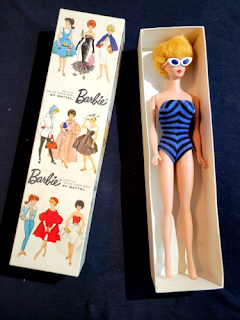Introduction
The 1950s marked a significant period of growth for the toy industry, with many iconic toys and brands emerging during this time. One such brand was Mattel, a company that has become synonymous with dolls and other children's toys. In this blog post, we'll explore Mattel's early years in the 1950s and examine why the business moved to China.
Mattel was founded in 1945 by Ruth Handler and her husband Elliot. The company started as a small venture creating picture frames, but Ruth's entrepreneurial spirit led her to explore new opportunities. In 1955, Mattel introduced its first major product, the Barbie doll, named after Ruth's daughter Barbara. Barbie quickly became a cultural phenomenon and cemented Mattel's place in the toy industry. In the 1950s, Mattel faced stiff competition from other toy manufacturers, such as Hasbro and Ideal.
To stay ahead of the competition, Mattel continued to innovate and release new products, such as the Chatty Cathy doll and the Hot Wheels line of toy cars. Despite the success of its products, Mattel faced challenges in production costs. The cost of producing toys in the United States was rising, and Mattel needed to find a way to reduce costs while maintaining quality.
In the 1960s, Mattel made the decision to move its production to Japan, where labor costs were lower. However, the move to Japan was not without its challenges. Mattel struggled to find reliable manufacturers and faced issues with quality control.
The move to China in the 1960's
To overcome these issues, Mattel eventually moved its production to China, where labor costs were even lower, and the manufacturing industry was more developed. The move to China proved to be a smart business decision for Mattel. The company was able to reduce its production costs significantly, which allowed it to invest more in research and development and expand its product lines.
Today, Mattel remains a major player in the toy industry, with its products sold in more than 150 countries. In conclusion, Mattel's success in the 1950s can be attributed to its innovative products and entrepreneurial spirit. The company's move to China in the 1960s was a strategic decision to reduce production costs and maintain competitiveness in the toy industry.
While the move to China had its challenges, it ultimately allowed Mattel to continue to grow and expand its product lines, cementing its place as one of the most iconic toy brands in the world.
How the move to China affected jobs in the USA
The decision to move Mattel's production to China had a significant impact on jobs in the United States. As manufacturing jobs moved overseas, many American workers found themselves without work. The shift to cheaper labor in China was a trend that affected many industries, not just the toy industry. The loss of manufacturing jobs had a ripple effect on the economy, as communities that relied on these jobs for their livelihoods were impacted. In the case of Mattel, the move to China meant that the company no longer relied on American workers to produce its products, leading to the closure of factories and layoffs.
However, it is important to note that the decision to move production to China was driven by market forces. As competition in the toy industry intensified, companies like Mattel needed to find ways to reduce costs and maintain competitiveness. For many companies, moving production overseas was seen as a way to achieve these goals. Despite the impact on American jobs, the move to China allowed Mattel to continue to grow and expand its product lines. The company was able to invest in research and development and innovate new products that would not have been possible if it had remained solely reliant on American manufacturing.
Moving back to the USA
In recent years, there has been a growing trend of companies moving their manufacturing operations back to the United States, driven in part by rising labor costs in China and a desire to support domestic manufacturing. However, for many companies, the decision to move production overseas is still a necessary step to remain competitive in a global market.
Moving to China led to more plastic pollution
In addition to the impact on jobs, Mattel's move to China also had a significant environmental impact. As the company ramped up production in China, it generated a large amount of plastic waste from the production of its iconic dolls. Unfortunately, much of this plastic waste ended up in landfills and oceans, contributing to the growing global problem of plastic pollution. A significant amount of this plastic waste was made up of discarded Barbie dolls and other toys made by Mattel. In fact, according to a 2018 report from Greenpeace, Mattel was among the top three worst plastic polluters in the world. The report found that the company produced over 17,000 tons of plastic waste each year, much of which ended up in landfills or was dumped into the ocean. The environmental impact of Mattel's plastic waste has been felt across the globe, as discarded toys and other plastic items continue to accumulate in oceans, harming marine life and ecosystems.
The long-term consequences of this pollution are still not fully understood, but it is clear that action needs to be taken to address the issue. In recent years, Mattel has taken steps to reduce its plastic waste and improve its environmental impact. The company has set ambitious goals to increase the use of recycled materials in its products and packaging and has committed to achieving 100% recycled, recyclable or bio-based plastic materials in all of its products and packaging by 2030. Overall, the impact of Mattel's move to China on the environment has been significant, with many tons of plastic waste ending up in landfills and oceans. While the company has taken steps to address the issue, it is clear that more needs to be done to address
the growing problem of plastic pollution.
the growing problem of plastic pollution.
Plastic dolls contribute to plastic pollution that is why rag dolls are a better choice
Plastic dolls in general contribute heavily to plastic pollution, not just Mattel's dolls. Plastic toys never really break down. Wood toys are preferable, and in my case I make rag dolls, which can be shredded at the end of their life cycle and made into other products.





No comments:
Post a Comment